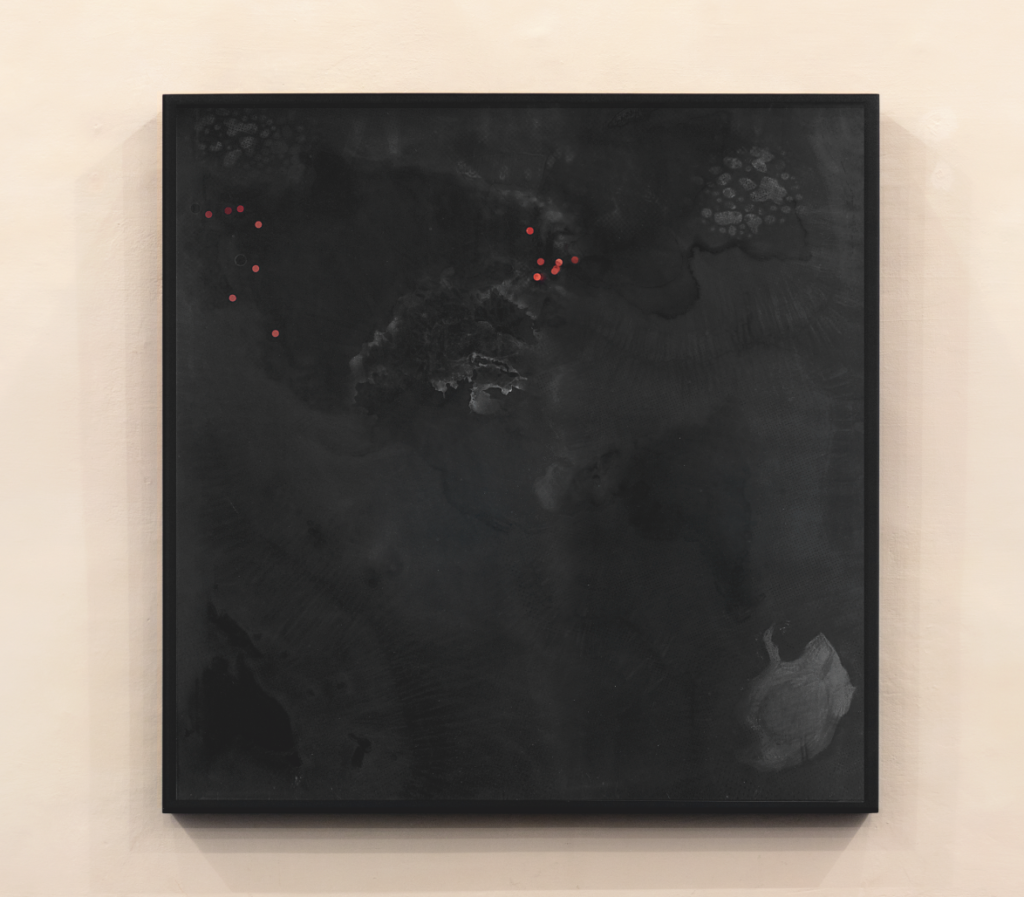Roberto Cuoghi
The idea of metamorphosis is present throughout Roberto Cuoghi’s work. While still a student at the Brera Academy in Milan, Cuoghi carried out his first investigations on his own body, attempting to transform himself into his father. The artist deliberately gained weight, dyed his hair white, and changed the tone of his voice. He also assumed the lifestyle and dress of an older person. Resulting health problems forced him to discontinue this exploration, but it is through his art that Cuoghi continues to analyze various forms of metamorphosis. His works involve a wide range of techniques, including photography, video, animation, painting, and drawing.
Senza titolo (Mappamondo nero con bollini) (Untitled – Black globe with stamps), 2003, originates from a sketch of a map of the globe drawn by heart, with the East facing upwards. By demonstrating how real data are subject to the corrections of the imagination, the technique used is based on the presence of several layers, marked by superimposed drawings and treated with experimental materials. The smoky outlines and some corrosions contribute to the production of a sort of psycho-geography, which contradicts the idea of a map as a useful tool for orientation.
Recently, without knowing how to play an instrument or sing on a professional level, the artist produced a number of sound pieces. Mbube, 2005, is the first work he created in this genre. A composition for voice and instruments, it represents a further mutation of a mutation—a remake of an eponymous pop song composed in the 1940s by South African songwriter Solomon Linda. A success in the writer’s homeland, the song became a valuable commodity when, in the 1950s, it reached the United States, where it was acquired by a record company and frequently interpreted and modified by many different performers. Beginning in the 1960s, under the title The Lion Sleeps Tonight, it became an international hit. In his version, Cuoghi restores some of the original Zulu sounds, while adding new and unexpected mutations. By creating a new song, and adding himself to the long list of those who have benefited from manipulating it, Cuoghi brings to light fragments of a little-known story marked by profound injustice. As Cuoghi found out while researching the history of the song, Linda received 10 shillings for the sale of the song, and he died with twenty-five dollars on his bank account; it is estimated that in the years that followed, the song generated over 55 million dollars for American record companies. The songwriter’s heirs currently have no rights to the composition and live in poverty in Johannesburg.
[MB]





